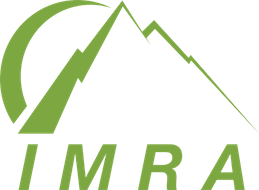The 4 Training Zones and their Characteristics
Tuesday, 5th February, 2008 -http://schubes1114.tripod.com/id1.html
1. Aerobic Conditioning-Base Phase
· Improve oxidative capacity in cardiac muscle and the muscles used in running
· Improve joint and tendon strength
· Increased capacity to store fuels
· Improved oxygen delivery and CO2 removal
Translation:
Base building means running at a steady, non-tiring pace 7 days a week for a sustained period. This makes your lungs stronger and works you heart; therefore, you need to take fewer respirations for a solidified effort and your heart can work less to achieve the same level of effort as before as you gain fitness. For an 800 to mile athlete, 6-8 weeks is the proper time for base (also known as core strength), for 3000m to 5000m athletes, 8-12 weeks is sufficient, and for 5000m to marathon, a minimum of 12 weeks is proper. Just remember the more base training you run, the higher your aerobic ability becomes, and therefore, your ability to race strongly at a high aerobic level increases. However, speed can be somewhat compromised during this phase, so it is usually smart to include Neuromuscular training (NMT) to remind your legs how to turn over. 6-10x100 to 150m strides at mile race pace 4-5 times a week will do this effectively.
2. Anaerobic Conditioning-Tempo/Steady-State Runs
· Increased ability of fast-twitch muscle fibres to use sugar and oxygen enzymes
· Increased amount of blood pumped in a single contraction of the heart
· Increased blood volume
Translation:
This phase is often a transitionary period and can be incorporated into the 1st phase by including one or two runs a weeks at a faster, yet still controlled, pace. On another note, your body has 2 main muscle fibres: Slow-twitch, or Type I, which support steady, long, slow running; Oxidative-Glycotic Fast-Twitch, or Type IIa, which is essential for middle- to long-distance running. It fires as a fast-twitch fibre should, when speed necessitates, however, these release over a period of time instead of instantly, therefore becoming crucial for distance running; Oxidative Fast-Twitch, or Type IIb, which is used in full-blown regular sprinting. The more Anaerobic conditioning that is done, the more Type IIb fibres convert into Type IIa, which is why this period is so crucial. Elite athletes often let this period last from 8-16 weeks, and it can also include pre-season tune-up races at under-distance events for sharpening or over-distance events for strengthening.
3. Aerobic Capacity-VO2 Max Training: Long Intervals/Fartleks/Long Hard Runs
· Increased ability of working muscles to use sugar and oxygen
· Increased blood-buffering capacity
· Continued activation of fast-twitch muscle fibres
Translation:
VO2 max is your body's ability to sufficiently uptake and transport and supply oxygen to your body at your body's anaerobic, or AT, threshold. AT is when you are right on the edge, usually about 80-90% of maximum speed. Most races between 3000m-10,000m are run at VO2 max pace for the majority of the distance. This period increases your VO2 max, strengthens your cells and allows them to break down sugar (glucose) and oxygen for quicker and more efficient use, buffers your blood so it can handle lactic acid better when it accumulates, and continues to convert Type IIb muscle fibres into Type IIa. This period, as the one above, is typically 8-10 weeks, and can include races instead of intervals or workouts. Beware of too many races, or a burnout is sure to occur. Runners are like race horses not race cars, we need our rest and don't need to constantly race at a high level to stay in tune, as long as our off-track training is sufficient.
4. Anaerobic Capacity-Speedwork/Short Intervals at Max Speed
· Improved functional length strength and overall speed
· Increased ability to tolerate high levels of lactic acid through increased buffering capability
· Increased blood plasma volume and improved neuromuscular recruitment
Translation:
This period, along with the base, is one of the easiest ones to explain. This period develops your wheels, or sprinting ability, also known as the "crucial edge" in distance running. It includes fast repetitions of 90 seconds or less, run at race pace or faster, and includes LAT, or lactic acid training, teaching your body to respond to lactic acid build-up without locking up and shutting down on you. You can maximize your anaerobic capacity and LAT in about 4-6 weeks. This period is usually done towards the end of a season and is followed by the key races of the year in a taper/major competition phase.
Edited and adapted from:
Coe, Peter N. and Martin, David. Better Training for Distance Runners (2nd Edition). Human Kinetics Publishers. 1997.

